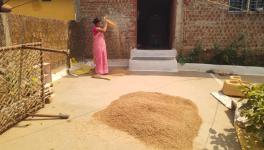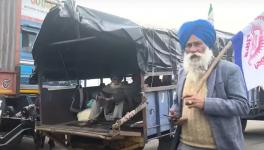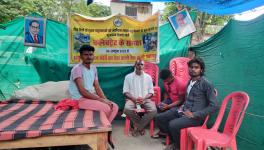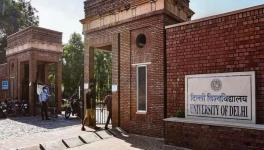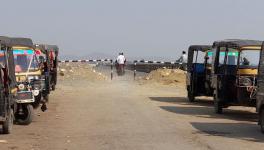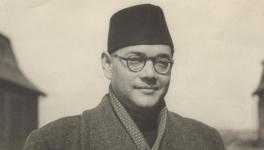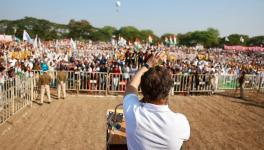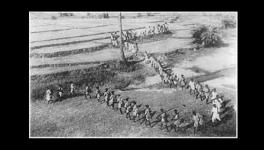MP: Govt to Build a Memorial at the Site of Massacre of 149 Soldiers by British in 1858
Image Courtesy: Twitter(CollectorSehore )
Bhopal: Almost seven decades after independence, the Madhya Pradesh government recognised the sacrifices of 358 rebel soldiers massacred in the first mutiny at Sehore's Saikdakhedi on January 14, 1858.
Known as Jalianwala Bagh of Madhya Pradesh, at Saikdakhedi, the commander of the British Central India Field Force, General Hugh Rose, and his men reportedly killed 149 of 356 rebel sepoys of the Bhopal Contingent Force — a collision force of Bhopal nawabs and the British. The state government has announced to build a grand memorial on the lines of Jaliawala Bagh.
The remaining rebel sepoys were killed at different places in Sehore. As per local lore, the bodies of the sepoys were hung by the trees and later dumped in a common grave to crush the uprising.
Located 40 km from the state capital Bhopal, Saikdakhedi in Sehore is the home district of chief minister Shivraj Singh Chouhan. Yet, it took CM Chouhan almost 16 years to build a memorial for the freedom fighters. Chouhan visited the spot on Tuesday during the 'Sehore Gaurav Diwas' celebrations – a part of the initiative by the government to celebrate a day of honour for every district in the state.
He said, "Sehore is the land of heroes. Amar Shaheed Chain Singh fought bravely against the British. At the place where the martyrs were gunned down in Sehore, a grand memorial will be constructed like Jallianwala Bagh."
CM paid tributes to martyrs at a basic memorial structure set up there about six years ago and promised to build a grand memorial to tribute to the martyred rebels who had set up a parallel 'Siphahi Bahadur Sarkar' and rejected the 'Company Bahadur Sarkar' of British.
Referring to the 1857 mutiny, Chouhan pointed out that the rebels had set up a parallel government by defying the British Raj but did not surrender. He said that photographs and written documents of the martyrs, as many as possible, will be collected and put up at the memorial. Besides, a tribute programme will be held every year.
Besides the memorial, CM Chouhan announced development projects, from constructing the city's CC road and footpaths, beautifying drains, constructing two bridges, installing LEDs in street lights, and deepening ponds. He made everyone present in the program take a pledge to take the city forward, make the city number 1 in cleanliness, get rid of drugs, etc.
Under the leadership of the last Mughal emperor Bahadur Shah Zafar, when the 1857 revolt was simmering in North India, the Bhopal Contingent Force in Sehore was upset over low wages, and other prevailing issues and posters were distributed among sepoys.
One of them drew inspiration from the poster and escaped to join Bahadur Shah Zafar's army in Delhi instead of accepting his wage. He was discharged, which infuriated the other troops.
Meanwhile, on July 1, about 50 Englishmen were killed after rebel soldiers of the Holkar army attacked the residency building in Indore containment. Henry Marion Durand, the British political agent to Indore, took asylum in Sehore as Bhopal Nawab and the British were allies. It upset the sepoys, and 14 rebel sepoys posted at Indore and Mhow marched back to Sehore without permission and instigated the soldiers in Sehore. As a result, the British political agent to Sehore —Major William Henry Rickards, was forced to flee to Hoshangabad with his family on July 10.
The unrest intensified when the commander-in-chief of the Bhopal army Bakhshi Murawwat Mohammad Khan, ordered the dismissal of the 14 soldiers who had left Indore and Mhow, including the popular Koth Havaldar Mahavir and Subedar Ramjulal. Fearing backlash from the Bhopal regiment, the lives of Mahavir and Ramjulal were spared, but they were arrested later along with other dismissed rebel leaders like Risaldar Wali Shah, his brother Arif and Ramjulal.
On August 6, 1857, an investigation at Ramlila ground in Sehore discovered powdered animal bones combined with sugar, escalating the disturbance. And there was a clear uprising. Koth Havildar Mahavir and Risaldar Wali Shah of the Bhopal contingent were heading the rebel force.
In August 1857, even as the historic uprising was taking place in the country, Mahavir and Shah, who had been dismissed from the Bhopal contingent for rebellion, had announced the establishment of 'Sipahi Bahadur Sarkar' in Sehore, where the contingent was based.
As a sign of cooperation between Hindu and Muslim forces, the rebels tore down the British Union Jack (flag) from government structures. They raised the Mahaviri Nishan, and Nishan-e-Mohammadi was allegedly flown at Kotwali police station. The sepoys' formation of a parallel administration and their rebellion against the British and Begum of Bhopal makes the Sehore Mutiny special.
Two months later, in October 1857, all the rebel soldiers were captured, but Shah and Mahavir managed to escape.
On January 14, 1858, General Hugh Rose entered Sehore and killed the rebel soldiers arrested earlier in October. Of the 356 soldiers killed that day, 149 were reportedly lined up and shot down at Saikdakhedi. Others were killed in small groups in nearby areas.
Mahavir, who had escaped the arrest and taken shelter in Sagar district, was caught and executed on February 3, 1858, by the British forces. Still, no records are available about Shah's fate, who escaped with Mahavir.
After crushing the uprising, General Rose defeated the Rani of Jhansi and the forces of Scindias in May and June 1858. A British writer Thomas Lowe documented it and wrote that 356 soldiers were killed in small groups on the day without a fair trial. Of these, 149 were lined up at a single spot and shot.
Almost a decade ago, a small neglected memorial stood at the spot of the martyrdom of 149 soldiers at Saikdakhedi by the Smarak Nirman Samiti, Sipahi Bahadur Sarkar, a citizens' organisation who had been struggling for recognition to the spot for over two decades.
Anand Gandhi, general secretary of the Smarak Nirman Samiti, expressed gratitude over the announcement and said, "Finally, the martyrs of Sehore mutiny got overdue recognition. CM has also announced putting all the historical facts of the incident at the memorial. Besides, a yearly programme in memory of the soldiers will be held.
Get the latest reports & analysis with people's perspective on Protests, movements & deep analytical videos, discussions of the current affairs in your Telegram app. Subscribe to NewsClick's Telegram channel & get Real-Time updates on stories, as they get published on our website.









